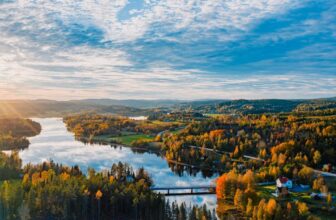Snowboarding is one of those activities that most people can agree is fun, exciting, and a huge adrenaline rush. The only problem is that these same people think learning to snowboard is a difficult, almost impossible task.
People ask ‘is snowboarding hard?’. Our response is, no, it’s not hard, as long as you have the right tips and training. Whether you are young or old, a snow sports lover or a complete novice, there are methods and training tips that everyone can do that will get you on the slopes in no time.
These steps may not make you a pro boarder overnight, but they will definitely give you a great foundation. Everyone has to start somewhere, and if you’re a beginner snowboarder, these basic snowboarding tips are exactly what you need.
Balance – Snowboarding for Beginners
The most crucial aspect of snowboarding is balancing. Being able to balance yourself correctly is the essential part of standing, moving and turning. It is the basis of everything you are going to be doing, and being able to balance perfectly makes the next steps much easier.
The first thing you should do is strengthen your leg muscles. Your legs are going to be doing a lot of the work, as well as having to be the strong base, so strengthening them is a must if you are a beginner.
One exercise you can do is to stand on one leg and swing the other in multiple directions. You do this until you can comfortably stand on one leg without swaying or falling over, you do this for both sides. Simple squats and lunges are also great.
The one thing to keep in mind once on your board, is to ensure your weight is always centred and over the top of the arches of your feet. Your arms should also be spread out a little bit to help you balance. Also, keep your head and hips centred too.
Moving and Turning
Once you are comfortable standing and balancing on your board, the next step is to actually start riding it. This is where things get very tricky and getting competent with moving may take a lot of time and practice.
First, keep your head up and focus on the direction you want to go, don’t look down at your feet as this can cause imbalance. Ensure your shoulders and head are pointed in the direction you want to move.
These are the basics of moving forward, you should practice going down the slope until you are comfortable with the movement and you know what to do with your body. After this, you can start practising turning.
Turning requires you to turn your whole body, it isn’t enough to just move your board as this will inevitably cause you to lose your balance and fall. Your head, shoulders, hips and feet must all move in one to ensure your board stays underneath you and your balance is kept.
This isn’t really a process that can be explained as it is more a feeling than an act. You need to feel when you are balanced and when you are not, and once you know what that feeling is, you will start to fall over less and less.
Type of Slope
It is quite easy to just step outside and try to learn to snowboard, but where you do it is important. Learning on tough, icy slopes are a recipe for disaster as it is almost impossible to learn in these conditions. You need powder snow.
Powder is much more forgiving and is also much easier to ride on. You will be going slower and you also minimise your chance of injury as you will just be falling into a soft cushion, which is ideal if it’s your first time snowboarding. It is highly recommended to find a spot with fresh powder when you are starting to learn how to snowboard.
Conclusion
These steps are a great starting point for people who are learning to snowboard. They will give you a great starting point that you can easily build onto once you get more and more proficient on the board.
It is going to take a lot of patience and time to be completely comfortable on your board, but once you are, you can easily start learning tricks and shredding the slopes on your next winter holiday.




